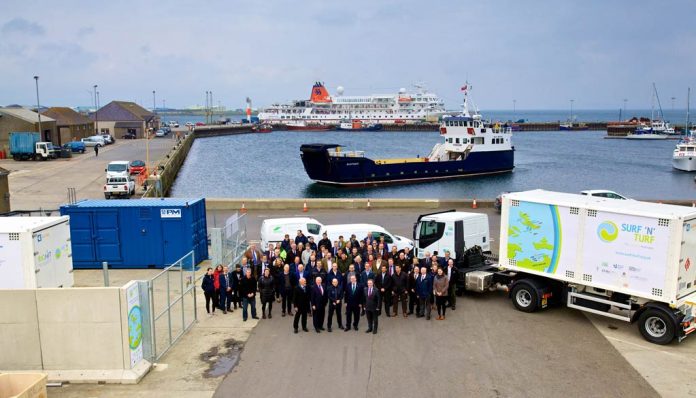
The European Marine Energy Centre (EMEC) has produced hydrogen gas using electricity generated from tidal energy in Orkney, Scotland. This is the first time that hydrogen has been created from tidal energy anywhere in the world.
By harnessing the power of the tide at EMEC’s tidal energy test site in Orkney, the prototype tidal energy converters–Scotrenewables’ SR2000 and Tocardo’s TFS and T2 turbine–feed power into an electrolyser situated next to EMEC’s onshore substation.
“The Scottish Government is pleased to be supporting this innovative project which will help to partially overcome grid constraints in the Orkney Islands by enabling the storage of excess tidal power generated and using that electricity to produce hydrogen,” said Paul Wheelhouse, Scottish Minister for Business, Innovation and Energy. “The project also adds to our growing understanding of the potential role of hydrogen in Scotland’s future energy system, something we have committed to exploring in our draft Energy Strategy.”
Supplied by ITM Power, the electrolyser uses the electricity to split water into its component parts–hydrogen and oxygen. The electrolyser is housed in a standard ISO container with hydrogen generation capacity of up to 220 kilogrammes every 24 hours.
EMEC’s investment in hydrogen production capability has been made possible by funding of £3 million from the Scottish Government, made available through Highlands and Islands Enterprise.
“The electrolyser was set up to pilot the production of hydrogen fuel from tidal energy, and now we’ve done just that,” said Neil Kermode, Managing Director of EMEC. “Whilst the initial driver behind buying an electrolyser was to provide a storage solution to circumvent local grid constraints, the purchase has sparked off other pioneering projects around Orkney looking to use hydrogen in various means. So we’re now looking towards the development of a hydrogen economy in Orkney.”
One of the most promising uses of hydrogen is as a fuel for transport as it emits no carbon when it is consumed and, providing it is generated by clean renewable energy sources, it becomes a carbon-neutral fuel source. Therefore, green hydrogen, over time, could replace polluting fuels in cars, vans and ferries.








